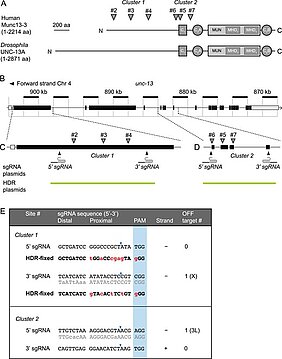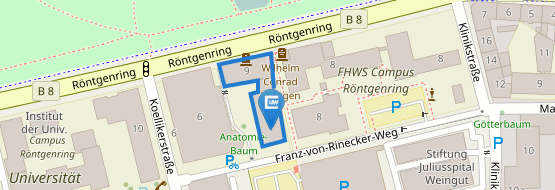Improving one-step scarless genome editing in Drosophila melanogaster by combining ovoD co-CRISPR selection with sgRNA target site masking
12.01.2022Improving one-step scarless genome editing in Drosophila melanogaster by combining ovoD co-CRISPR selection with sgRNA target site masking
Katharina J Götze, Achmed Mrestani, Paula Beckmann, Knut Krohn, Diana Le Duc, Akhil Velluva, Mathias A Böhme, Manfred Heckmann, Rami Abou Jamra, Johannes R Lemke, Hendrik Bläker, Nicole Scholz, Dmitrij Ljaschenko, Tobias Langenhan
Biology Methods and Protocols, Volume 7, Issue 1, 2022, bpac003
The precise and rapid construction of alleles through CRISPR/Cas9-mediated genome engineering renders Drosophila melanogaster a powerful animal system for molecular structure–function analyses and human disease models. Application of the ovoD co-selection method offers expedited generation and enrichment of scarlessly edited alleles without the need for linked transformation markers, which specifically in the case of exon editing can impact allele usability. However, we found that knockin procedures by homology-directed repair (HDR) under ovoD co-selection resulted in low transformation efficiency. This is likely due to repeated rounds of Cas9 cleavage of HDR donor and/or engineered genomic locus DNA, as noted for other CRISPR/Cas9 editing strategies before, impeding the recovery of correctly edited alleles. Here we provide a one-step protocol to improve the generation of scarless alleles by ovoD-co-selection with single-guide RNA (sgRNA) binding site masking. Using this workflow, we constructed human disease alleles for two Drosophila genes, unc-13/CG2999 and armadillo/CG11579. We show and quantify how a known countermeasure, the insertion of silent point mutations into protospacer adjacent motif (PAM) or sgRNA homology regions, can potently suppress unintended sequence modifications during CRISPR/Cas9 genome editing of D. melanogaster under ovoD co-selection. This strongly increased the recovery frequency of disease alleles.


